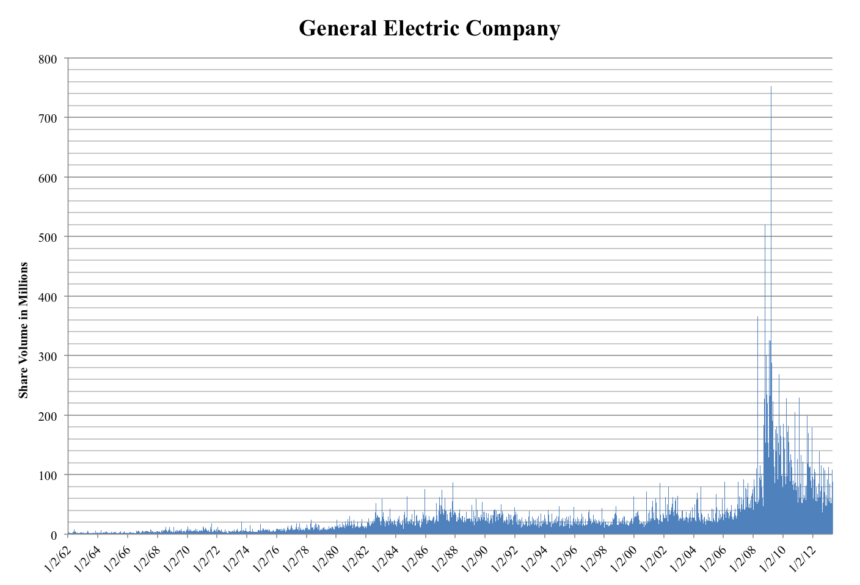Two contrasting trends are taking place in the cryptocurrency industry, which highlight both ongoing efforts to drive mainstream adoption and their challenges. Binance introduced a feature that allows users to directly trade from their CEX wallets into decentralized exchanges. The aim is to improve the user’s experience by bridging the gap between CEX platforms and DeFi. Uniswap is one of the biggest decentralized exchanges. Its visibility has been declining and its user engagement decreased significantly over recent months.
Binance launches seamless CEX-to DEX trading in push to simplify crypto experience
Binance is the largest cryptocurrency exchange in terms of trading volume. It has now launched an innovative feature that allows its users to directly trade from their centralized exchange to decentralized ones (DEX). This marks a major step towards addressing longstanding barriers to crypto user experience.
Binance’s new integration allows customers to use funds in their CEX wallets for trades executed on DEX platforms, without having to perform manual asset bridges, wallet switches, or burdensome token transfers – processes which have traditionally discouraged many newcomers to engage with Decentralized Finance (DeFi).
Binance announced that its new CEX to DEX trading feature allows users to trade across several blockchain networks including Ethereum, Base, Solana and BNB Smart Chain. Binance users can use USDC, Circle’s stablecoin pegged to the dollar and other stablecoins supported by Binance directly on their Binance account in order to purchase tokens that are available through DEXs within these ecosystems.
Binance said that the feature was fully integrated into other services available on the platform. These include Binance Alpha which allows users to access new tokens early, as well as the Binance Quick Buy Tool, which makes it easier for customers to purchase digital assets.
Binance’s new product aims to simplify the interaction with DeFi platforms by eliminating asset bridging. Asset bridging is the process of transferring tokens between blockchains via third party protocols.
Binance’s move directly addresses one of crypto’s biggest hurdles, the complex and intimidating user interface. Crypto is plagued with complex interfaces, confused wallets and fragmented liquidities across blockchains. The challenges faced by mainstream users have often prevented them from fully participating in Web3 and interacting with the decentralized finance protocol.
A meme that circulates in the crypto community pokes fun of this issue. It compares the multiple-step interaction with DeFi platforms as “solving Rubik’s Cubes blindfolded.” Binance has launched a new initiative to try and remove the blindfold.
This feature is part of a broader effort across the industry to simplify user experiences and improve accessibility. The WalletConnect Foundation, in partnership with Reown, introduced a framework standard for crypto wallets on November 20, 2024. This was to reduce friction and simplify interactions between wallets.
Pedro Gomes of the WalletConnect Foundation explained that at the time, the framework focused on “minimizing the number of clicks and reducing the transaction friction while improving interoperability and providing accessible and clear information.”
Anurag Arjun has pointed out how blockchain abstraction technologies have led to ecosystem fragmentation. Arjun stressed that connecting assets between networks not only is cumbersome, but it also creates confusion and unnecessary risks for users.
Sandeep Nailwal – who founded Polygon with Arjun – compared the state of crypto to that of the Internet in the 1990s, a time of clunky user interfaces and restricted accessibility. Nailwal said that smoother onboarding and better wallet recovery solutions are crucial for the mass adoption of crypto.
A Step Toward Mass Adoption
Binance has responded to these concerns by allowing CEX to DEX direct trading. This will lower the barrier to entry for millions of users that want to learn more about decentralized platforms, but have been discouraged due to technical issues.
Exchange believes that closing the gap between decentralized finance and centralized finance will lead to a wider adoption of crypto. Binance’s new feature is designed to provide users with a Web2-like financial experience, while maintaining the simplicity and security of centralized custody.
Binance’s initiative may set the tone for a trend in which major platforms will help retail users enter the DeFi eco-system without having to undergo a steep learning curve. This could lead to more competition between exchanges, with them offering user-friendly and interoperable crypto services.
This approach also addresses the growing concerns of regulators about security and user protection in DeFi, by allowing DeFi users to interact directly with ecosystems decentralized without unnecessary risks.
Uniswap’s US App Store ranking crashes to historic lows amid trading volume decline
Uniswap is the leading DEX in the world, but its user engagement and visibility are on the decline. This can be seen by the dramatic drop in US App Store ranking. Uniswap, which was once riding high due to the post-election enthusiasm for crypto, has seen its finance category ranking plummet, reaching levels it hadn’t reached since early days. This is due to a decline in user activity as well as trading volume.
Uniswap experienced a major boost in its app ranking following the US Presidential election of 2024. Uniswap’s app store ranking jumped significantly after the 2024 US presidential election. The positive feelings surrounding Trump’s inauguration, in January 2025, propelled Uniswap to the highest ranking it has ever achieved — 99th place.
This spike was short-lived. Uniswap has seen its app store ranking rapidly deteriorate over the last two months. It now ranks 364, a drastic drop which not only erases its gains post-election but pushes it to its worst ranking ever.
Despite the temporary increase in popularity of crypto-related applications following the election win for pro-crypto, many eventually returned to their previous standings. Uniswap is an exception, as its rankings are well below historical norms. This suggests that the election hype has faded.
The decline in App Store rankings appears to be a symptom for a broader slowdown within Uniswap’s ecosystem. Since 2025 the trader activity of Uniswap on the Ethereum Network has been in sharp decline. From 69,680 traders at the start of January, to 37,000 by March, this number has dropped over 45%. This is the lowest level since July 2023.
The trading volume has also been affected by this exodus. Uniswap reported a drop of 10% in its trading volume between December 2024 and January 2025. The decline was accelerated by a further 22% drop in trading volume from January to Februrary.
The trend is still down. Uniswap is barely able to surpass half the February total with just days remaining in the month. This could be the worst performance for the company in over two years.
Why is Uniswap declining?
Uniswap may have been struggling due to a number of factors. While the initial election optimism drove the user engagement in the crypto market, it has since been cooled by regulatory uncertainty and economic worries. Uniswap’s decentralized platform, although praised by crypto enthusiasts, is at odds with growing demands for more streamlined, user-friendly platforms.
Uniswap is also facing intense competition, both from emerging decentralized platforms and established centralized companies who integrate DeFi into their platform. Binance’s recent launch of CEX to DEX trading integration offers a simpler onboarding experience for retail users who are interested in exploring decentralized markets. This is a segment that Uniswap had historically found difficult to compete.
The drop in Uniswap’s ranking in the app store may indicate waning retail interest. Many casual investors were attracted to cryptocurrency during the bull market of 2021, but they have left the market due to prolonged volatility and poor price performance within the DeFi industry.
Uniswap’s steep decline in app usage and visibility has raised urgent concerns about the company’s ability to remain relevant and competitive in a crypto-environment that is rapidly changing. DEX was the first to introduce automated market-making (AMM), decentralized liquidity pools and other innovations. However, these may not be sufficient in order to retain and attract users due changing market dynamics.
Uniswap’s community and development team are under pressure to stop the platform from losing momentum. The trading data for March is expected to show another contraction. Uniswap will need to reimagine its engagement with a wider audience, whether through new product innovations, enhanced user experiences, or improved marketing, if it wants to change the current trajectory.






